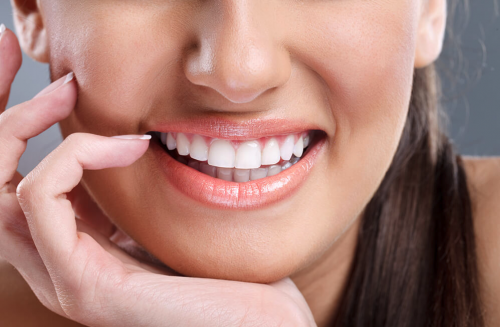What is Orthodontics / Dentofacial Orthopedic Treatment?
Orthodontic treatment aims to correct and treat malocclusion (improper bite). You may have heard terms like ‘underbite’ and ‘overbite’ in the past, these are some of the conditions addressed. Orthodontics is so much more than just making straight teeth, it is about creating facial balance – the realm of dentofacial orthopedics. Having beautiful teeth in jaws that not only fit each other well, but also occupy the correct position in the face, creating the best possible aesthetic result.
The malocclusion treatment equipment most frequently associated with orthodontics, is fixed braces. Your dentist will evaluate and assess your radiographs (x-ray films) and dental geography when deciding if fixed braces are the correct option for you. Other treatment modalities may include retainers, headgear, removable appliances, and/or a combination of these. Severe malocclusions may require surgery and collaboration between your dentist and a maxillofacial surgeon. It is therefore of utmost importance to address problems at an early age, whilst growth can still be utilized using dentofacial orthopedic treatment.
Who stands to benefit from Orthodontic treatment?
Anybody who suffers from:
- Overbite
- Underbite
- Overcrowding
- Gaps between teeth
- Crooked teeth
- Missing or impacted teeth
- Otherwise misaligned jaw
- Facial deformation & jaw deformations
- Low self-esteem as a result of crooked or misaligned teeth
Orthodontics can be used to treat a wide variety of malocclusion abnormalities.
When should orthodontic intervention occur?
Orthodontics isn’t a one-size-fits-all treatment, but rather customized to individual needs. The ideal age at which to begin treatment will depend on factors such as the nature of the malocclusion, the emotional maturity of the patient, growth stage and phase of dental development. That being said; orthodontics has been proven effective in realigning teeth and producing Hollywood smiles in both children and adults. In fact, about 30% of new orthodontic patients in 2018 are adults! Leading experts recommend your child go for an orthodontic evaluation before the age of 9, so that potential malocclusion issues can be identified. Early intervention increases the treatment options available and may reduce the need for more expensive modalities required later in life.
If you are an adult seeking orthodontic treatment, you can approach your dentist to discuss your options. Orthodontics is effective in both non-growing and growing patients, however, sometimes treatment duration may be significantly increased as a result of the mature (read “no longer growing”) anatomy.
What is the most important thing I should know about Orthodontic Treatment
Patient cooperation is a key factor in determining the success or failure of treatment. Ultimately, it is what the patient makes of it – if you follow your dentist’s recommendations and instructions carefully, you will minimize treatment duration while increasing the likelihood of achieving the desired result with orthodontics alone (as opposed to a combined surgical and orthodontic approach – which may be recommended in certain instances regardless). Teenagers, especially those with removable corrective apparatus are repeat offenders when it comes to bad oral hygiene, not wearing their equipment and failing to cooperate with their dentists. This is why the emotional maturity and willingness of the patient to commit to the treatment plan is instrumental in determining whether or not a patient is fit for orthodontic treatment, and whether or not orthodontic treatment will have the desired outcome.
For more information on orthodontic treatment and malocclusion, or to schedule a consult, please feel free to contact us.

